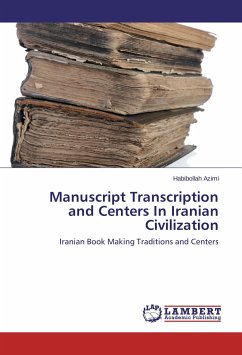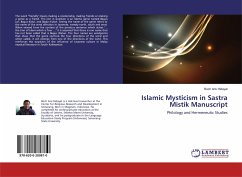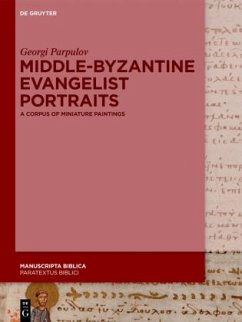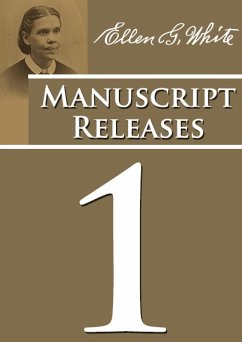
Manuscript Transcription and Centers In Iranian Civilization
Iranian Book Making Traditions and Centers
Versandkostenfrei!
Versandfertig in 6-10 Tagen
22,99 €
inkl. MwSt.

PAYBACK Punkte
11 °P sammeln!
In 13th - 14th centuries, the number of authors, scribes, book-makers and book-painters increased considerably and consequently. Transcription, book-making and book illuminating centers were established in Iran and other Islamic countries. Some Arabic and Persian books and treatises were authored on the procedures of writing, transcribing, corresponding, painting, illuminating, writing scripts and so on during 9th -10th centuries. By glancing at Islamic manuscripts, it can be argued that many manuscripts were transcribed in three main transcription centers: A) Court transcription centers where...
In 13th - 14th centuries, the number of authors, scribes, book-makers and book-painters increased considerably and consequently. Transcription, book-making and book illuminating centers were established in Iran and other Islamic countries. Some Arabic and Persian books and treatises were authored on the procedures of writing, transcribing, corresponding, painting, illuminating, writing scripts and so on during 9th -10th centuries. By glancing at Islamic manuscripts, it can be argued that many manuscripts were transcribed in three main transcription centers: A) Court transcription centers where manuscripts were transcribed gloriously for their conferring on kings and Caliphs in courts; B) Scientists and scholars' transcription centers where manuscripts were transcribed for their educational requirements; C) Scribes and book-dealers' transcription centers where book-dealers or educated minds delivered some ordered or needed manuscript to be transcribed by some scribes for fee. Eachof These manuscripts have some common features helpful in their identification. This book contains Some special customs and traditions of transcription were appeared in these transcription centers.












